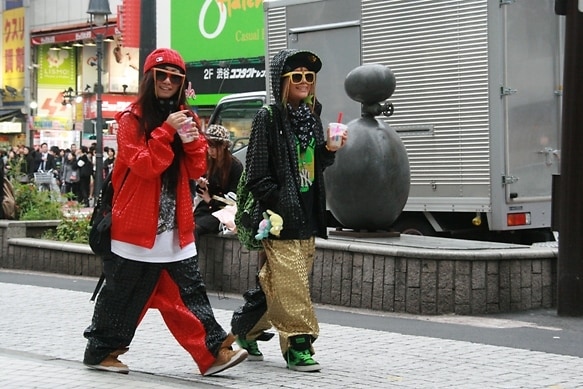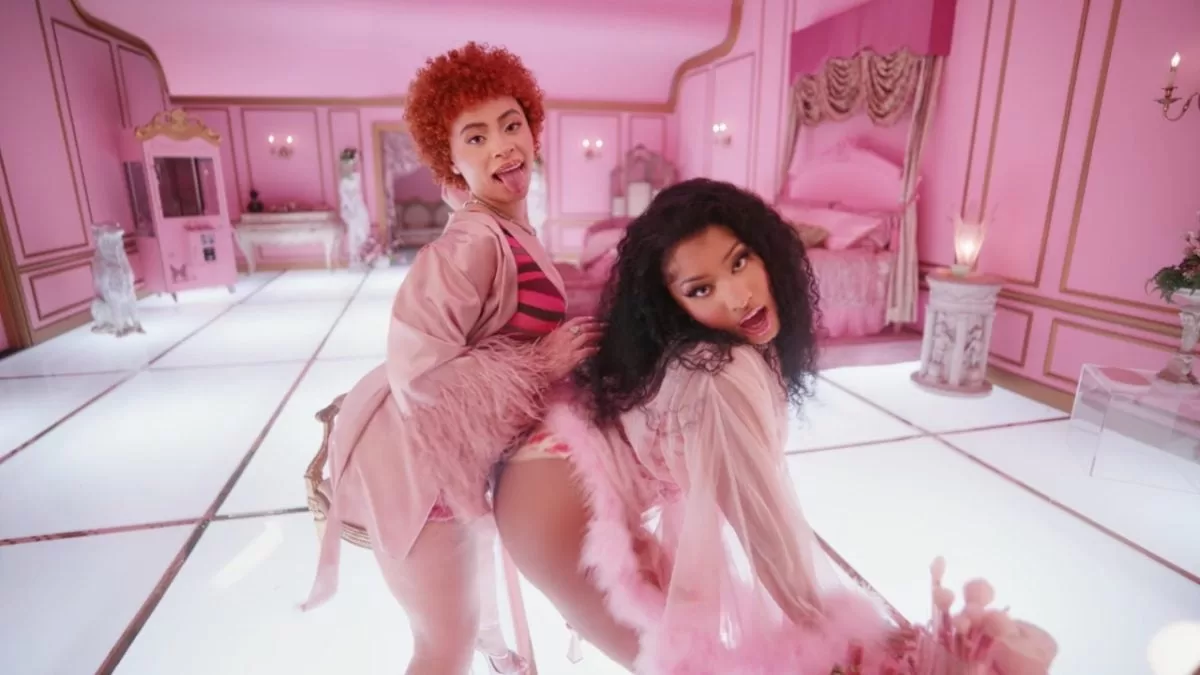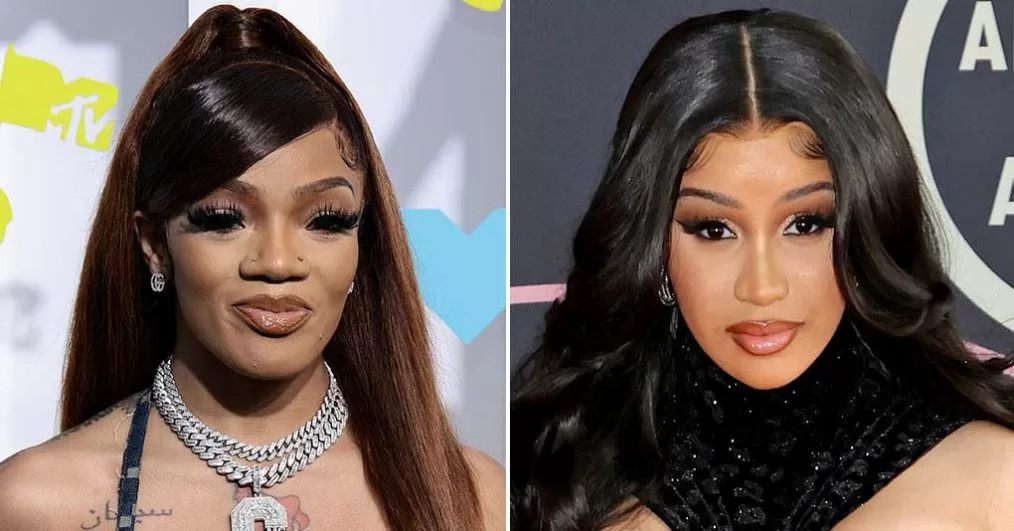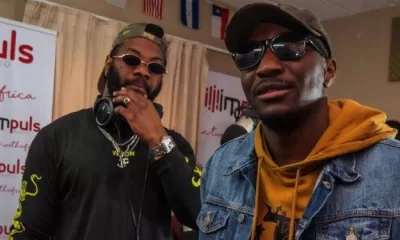Editorial
Anime and Manga Influence on Japan Hip Hop: A Fusion of Creativity and Pop Culture

From the captivating animation styles of anime to the immersive storytelling of manga, Japan has produced a wealth of popular cultural exports that have influenced millions around the world. However, these artistic forms have not only captivated audiences but have also left an indelible mark on Japan’s hip hop scene. In this article, we embark on an exciting exploration of the unique relationship between anime, manga, and Japan hip hop, uncovering how these worlds intersect and shape the creative landscape. By delving into popular examples and showcasing the impact of this fusion, we aim to captivate the imagination of younger readers and highlight the dynamic evolution of Japan’s hip hop culture.
1. Anime and Manga References in Lyrics:
In the vibrant realm of Japan hip hop, artists have embraced their love for anime and manga by seamlessly weaving references into their lyrical tapestries. Renowned hip hop artists like Nujabes, also known as Jun Seba, demonstrated this beautifully through his production work for the anime series “Samurai Champloo.” In the track “Battlecry,” featuring Shing02, Nujabes sampled the opening theme of the anime, seamlessly blending it with his signature hip hop beats and creating a captivating fusion of anime and music. The collaboration not only appealed to fans of both mediums but also introduced hip hop to a wider audience through the anime’s popularity.
Another example of anime and manga references in hip hop lyrics can be found in the works of the rap group King Giddra. Known for their thought-provoking and socially conscious music, they incorporated nostalgic nods to iconic characters and series in their lyrics. In their song “Cocacola Dake wa Kanpai,” they cleverly referenced popular anime series like “Dragon Ball” and “Slam Dunk,” creating a connection with fans who shared a love for both anime and hip hop. These lyrical references serve as a cultural shorthand, establishing connections between the artist, the music, and the shared experiences of the audience.
2. Visual Aesthetics and Music Videos:
The dynamic visual aesthetics of anime and manga find new life in the world of Japan hip hop. Artists like AKLO, known for his energetic and captivating music, bring the captivating action sequences and distinct art styles of popular anime series to life through their music videos. In his music video for the song “RGTO,” AKLO channels the spirit of anime, incorporating dynamic animation sequences reminiscent of shows like “Dragon Ball” and “One Piece.” The vibrant colors, fast-paced action, and art style pay homage to the visual aesthetics of anime, creating an immersive and visually captivating experience for viewers. Through these visually stunning music videos, AKLO blurs the boundaries between hip hop and anime fandom, captivating a younger audience and bridging the gap between these two artistic realms.
3. Fashion and Cosplay Influences:
The influence of anime and manga on Japan hip hop extends beyond the music itself, seeping into the fashion choices of artists and fans alike. Hip hop artists such as Kohh, known for his unique fashion sense, have embraced streetwear trends popularized within anime and manga subcultures. Drawing inspiration from vibrant colors, oversized clothing, and distinctive hairstyles reminiscent of beloved characters, these artists create their own unique style that combines elements of hip hop and anime culture.
Moreover, the influence of cosplay, a form of costume play popular in anime conventions and fan events, is evident in the performance aspect of Japan hip hop. Artists and fans alike embrace cosplay during live shows, donning costumes inspired by beloved anime characters. This visually striking fusion of hip hop and cosplay blurs the lines between reality and the fantastical worlds of anime and manga, creating an atmosphere that is both visually captivating and participatory. The audience becomes an active part of the performance, immersing themselves in the shared experience of anime fandom and hip hop music.
4. Collaborations and Soundtracks:
The relationship between anime, manga, and Japan hip hop deepens through collaborations and the creation of original soundtracks. Recognized hip hop artists like MIYACHI have contributed their talents to anime series, creating captivating theme songs that enhance the overall viewing experience. MIYACHI’s collaboration with the anime series “Jujutsu Kaisen” resulted in the track “Kaikai Kitan,” which served as the opening theme song and gained popularity among both anime and hip hop enthusiasts. The energetic beats and catchy hooks blended seamlessly with the anime’s visuals, creating a synergy that appealed to a wider audience and introducing them to the world of Japan hip hop.
Another notable example is Kenshi Yonezu, a renowned artist who provided the opening theme song “Peace Sign” for the widely acclaimed anime series “Boku no Hero Academia.” The infectious melodies and uplifting lyrics of the song perfectly complemented the series’ themes of heroism and resilience, resonating with both anime fans and hip hop enthusiasts. These collaborations between hip hop artists and anime soundtracks not only showcase the diverse musical talents of Japan hip hop but also attract a younger audience to both the music and the anime series.
5. Cultural Impact and Global Recognition:
The profound impact of anime and manga on Japan hip hop has not only propelled the genre to new heights within Japan but has also garnered global recognition. Artists such as AKIRA, a visionary in the world of Japan hip hop, and the J-Hip Hop collective YENTOWN have successfully merged anime-inspired aesthetics with hip hop music, attracting a diverse audience worldwide. Their music videos, performances, and fashion choices reflect a unique blend of anime and hip hop culture, capturing the imagination of younger listeners and bridging the gap between these two artistic realms.
This cross-cultural exchange not only celebrates the richness of Japan’s pop culture but also serves as a bridge between different artistic communities. The fusion of anime, manga, and hip hop provides a captivating and engaging platform for self-expression, fostering creativity and unity among younger generations. It sparks conversations, inspires collaborations, and expands the horizons of artistic expression. The blending of these creative worlds has helped to create a sense of community and shared cultural experiences among younger audiences who are drawn to the captivating fusion of anime and hip hop.
Top Japan Hip Hop Artistes & Their Songs
1. AKLO:
-Perfect Day
-Lost in Paradise
-Timeless
2. AK-69:
-Raise the Flag
-Don’t Look Back
-Last Dance
3. BASI:
-Tokyo Drifting
-Be Myself
-90’s Lover
4. GADORO:
-Tokyo Ghetto
-Walkin’
-I’m a Goner
5. Hannya:
-No Hook Freestyle
-Bad Habit
-90’s Kid
6. JP THE WAVY:
-Colors
-Stay Gold
-The Light
7. ¥ellow Bucks:
-Love is Blind
-90’s Love
-Tokyo Love Story
8. OZworld:
-Ain’t No Sunshine
-No Hook Freestyle
-90’s Anthem
9. SKY-HI:
-Run This Town
-Sincerely Yours
-Don’t Trip
In the vast realm of Japan’s popular culture, the fusion of anime, manga, and hip hop stands as a testament to the transformative power of creativity and its ability to transcend boundaries. From lyrical references to visually stunning music videos, fashion influences to collaborative soundtracks, the intertwining of these mediums creates a vibrant tapestry of artistic expression that captivates the imagination of younger readers. By embracing the dynamic fusion of anime, manga, and hip hop, Japan’s creative landscape continues to evolve, attracting a diverse range of enthusiasts who appreciate the power of pop culture to inspire, connect, and shape the world around us. The cross-pollination of these artistic forms not only brings joy and entertainment but also creates meaningful connections, fostering a sense of unity among fans worldwide. As anime, manga, and hip hop continue to evolve and intersect, we can only anticipate even more exciting collaborations and innovative creations that will captivate and inspire the younger generation.







































